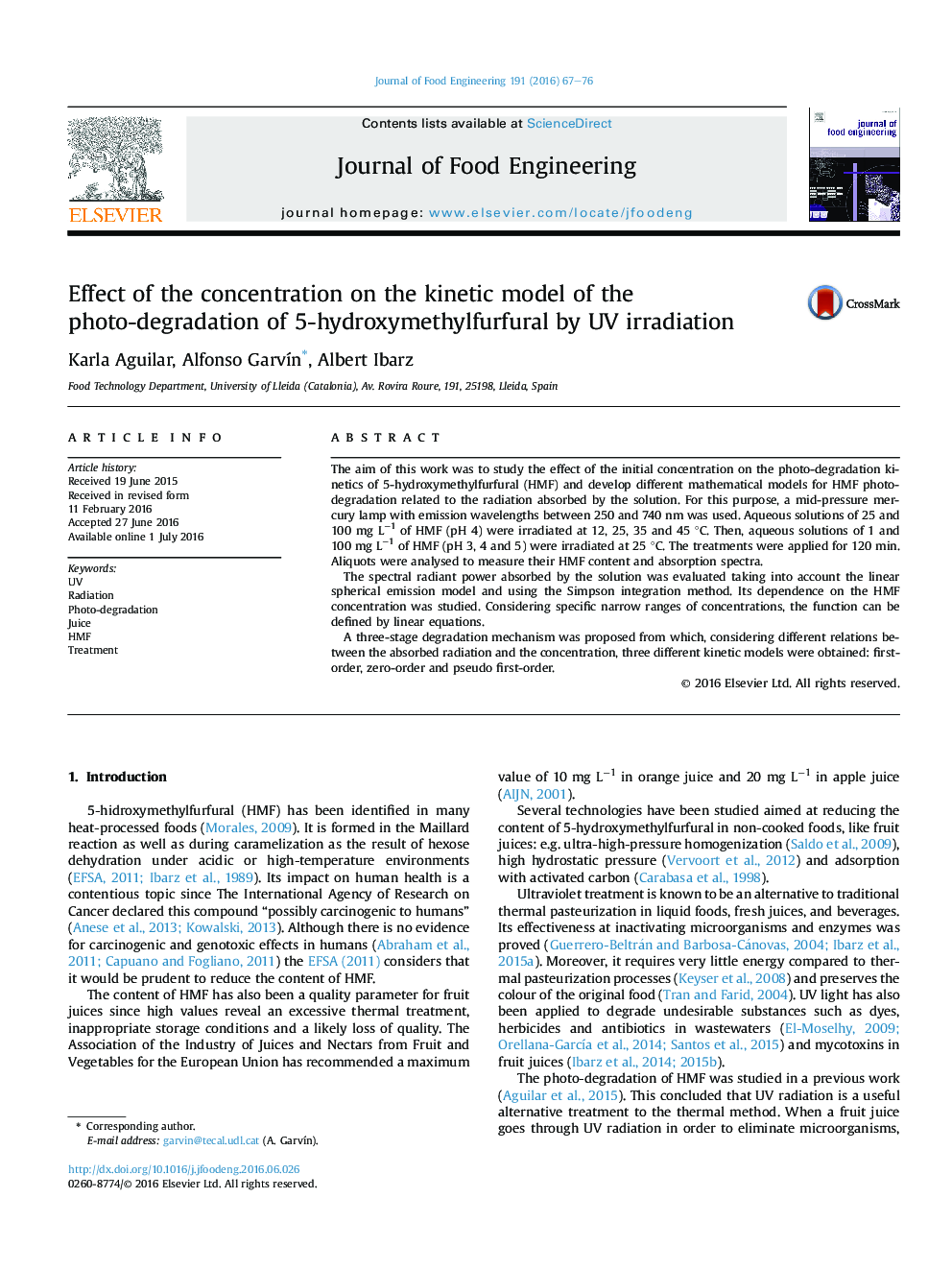| Article ID | Journal | Published Year | Pages | File Type |
|---|---|---|---|---|
| 222552 | Journal of Food Engineering | 2016 | 10 Pages |
•A mid-pressure multi-wavelength lamp was used to degrade HMF.•Aqueous solutions with different initial concentrations of HMF were irradiated.•The radiant power absorbed by the solution depends on the HMF concentration.•For low concentrations, photo-degradation kinetics fits a first-order model.•For high concentrations, photo-degradation kinetics fits a zero-order model.
The aim of this work was to study the effect of the initial concentration on the photo-degradation kinetics of 5-hydroxymethylfurfural (HMF) and develop different mathematical models for HMF photo-degradation related to the radiation absorbed by the solution. For this purpose, a mid-pressure mercury lamp with emission wavelengths between 250 and 740 nm was used. Aqueous solutions of 25 and 100 mg L−1 of HMF (pH 4) were irradiated at 12, 25, 35 and 45 °C. Then, aqueous solutions of 1 and 100 mg L−1 of HMF (pH 3, 4 and 5) were irradiated at 25 °C. The treatments were applied for 120 min. Aliquots were analysed to measure their HMF content and absorption spectra.The spectral radiant power absorbed by the solution was evaluated taking into account the linear spherical emission model and using the Simpson integration method. Its dependence on the HMF concentration was studied. Considering specific narrow ranges of concentrations, the function can be defined by linear equations.A three-stage degradation mechanism was proposed from which, considering different relations between the absorbed radiation and the concentration, three different kinetic models were obtained: first-order, zero-order and pseudo first-order.
